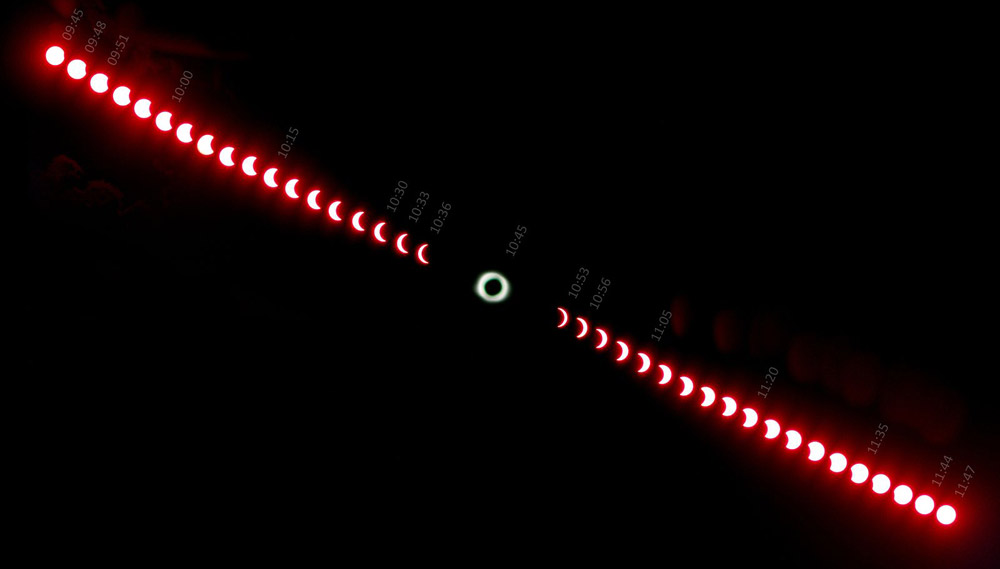Solar Eclipse and Solar Radiation
Solar radiation data provides information on how much of the Sun's energy strikes a surface at a location on Earth during a particular time period. More solar radiation is present at midday, when the Sun is directly overhead, meaning the path of the Sun’s rays is shortened to get to the surface of the Earth, and the energy is not scattered. The unequal distribution of solar radiation over the Earth is the primary cause of weather and climate.

Source: Kalan/Wikimedia commons
During an eclipse, the amount of solar radiation reaching the Earth’s surface decreases, but only in areas impacted by the penumbra and umbra. The reduction in sunlight can also confuse animals.